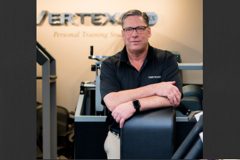Muscle Confusion
Muscle confusion is currently a big buzzword in the fitness field. Program “X” is based on the principle of muscle confusion to ensure maximum growth. Trainer “Y” says, “You gotta confuse your muscles to get them to grow!” But what exactly is muscle confusion?
To start, muscles do three things: they contract and shorten (a concentric contraction), they contract and lengthen (an eccentric contraction) or they contract and stay the same length (an isometric contraction). Also, muscles respond to stress. Muscles will not get bigger/stronger if the stress placed on them is not more than they can currently handle (the term for this is overload). The overload must periodically be increased to maintain an overload (this is called a progressive overload).
(A quick word about stress on a muscle-it doesn’t matter what the stressor is, be it a machine, free weight, or a big bag of potatoes, as long as the stress is a little more than what the muscle is used to, growth will occur)
Anyway, back to confusion. Proponents of muscle confusion will tell you that you need to do something different each and every time you workout to shock the body and force it to grow. That is a good way to get sore after each workout, but not totally necessary.
It comes back to the progressive overload. If you use more weight or do more repetitions or just work harder on your next workout, your muscles will be “confused”. To me muscle confusion is a marketing word for variability. Pick out some exercises, work hard, rest and do it again.
Request a complimentary first session at Vertex Fitness, Voted the BEST Personal Training Studio on the Main Line
Click HERE and we will schedule a session to try it yourself








marlene laureys
January 23, 2016 5:02 pmTotally agree with this.
Dwayne Wimmer
March 28, 2016 9:02 amMarlene,
Thanks for your comment.
Dwayne
K Richards
January 26, 2016 8:13 amAgreed. I`m in my fifties and still growing based on this principle.
Dwayne Wimmer
March 28, 2016 8:59 amK. Richards,
Thank so much for your comment.
Keep growing!!
Dwayne
Kathy Kerber
January 27, 2016 6:20 pmI was so happy to see the reference to muscle confusion, but disappointed to see it was seemingly intentional! In my work, I help people bring their muscles back to normal working order after they’ve been injured, subjected to overuse, etc. In soooo many cases, I have clients, such as cyclists who, when they contract their quads, their hamstrings contract as if to help! These are confused muscles for sure and they kill performance! Once the quads and hamstrings get sorted out via resistance/release training, the brain relearns how to work the muscles as originally intended. This is the epitome of smart performance, and when you can bring entire kinetic chains to work in concert, well, that’s where real strength is achieved. But, I guess you guys are the experts…
Dwayne Wimmer
March 28, 2016 8:58 amHello Kathy,
I apologize for the late reply. Thank you so much for your comment. I agree with you 100%. The problem is the term “Muscle Confusion”. In the case you state, the confusion is in the neurological system, or the order of contracting the muscles for maximum efficiency and effect, i.e. the skill of the movement. Since muscles have no cognitive ability, they only contract when told to do so by the impulses from the brian. In your example, you are teaching a more effective skill, laying down different neurological pathways to make the movement more efficient and effective. Do this enough times and it creates new pathways and then becomes the new norm and a new skill.
Thanks again for your comment,
Dwayne